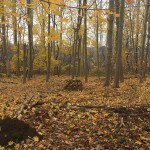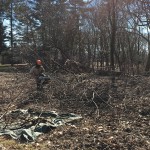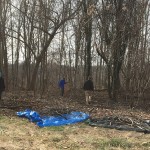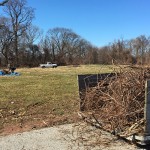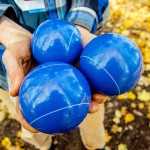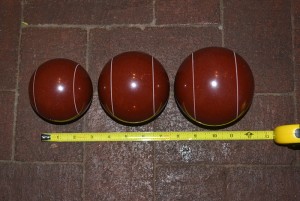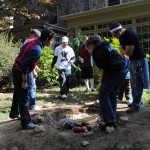The game of Stones can be played anywhere – from backyards to the beach, and even indoors (coming soon), but perhaps the best place to enjoy everything the game has to offer is in the woods.
After being chosen as a finalist in the Commission on Parks and Recreation’s Pitch Your Passion Philly contest, we set out with PP&R to find an appropriate site. The first site considered was a Stones course dream – forest canopy, plenty of room, a stream for water hazards, and rolling topography. Outside of gameplay, however, there were other factors to consider.
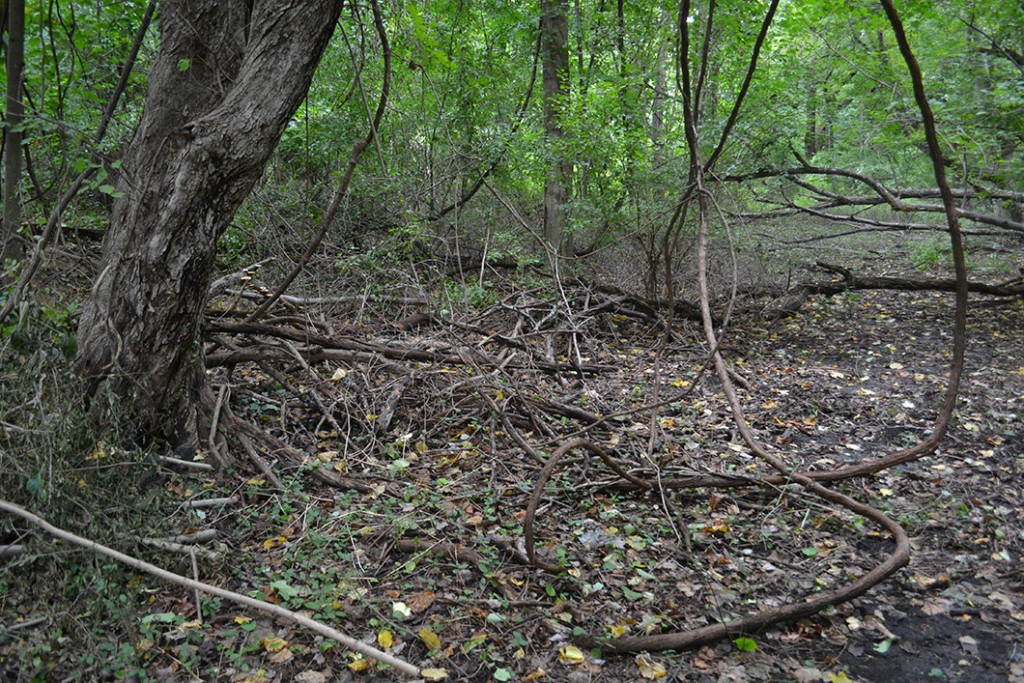
Sure, there was plenty of trash to remove and invasive vines to pull, but cleaning up any “unused” site isn’t always a good idea, especially for it’s inhabitants: wildlife. A quick survey revealed a healthy population of native oaks, maples, ash, and hickory, all key to a healthy bird population. The soggy seeps near the stream provided ideal habitat for salamanders and other amphibians, as did the stream. While it would have helped to remove the invasive bittersweet and honeysuckle vines creeping up into the canopy, the increased foot traffic (from the hundreds of people we expect to use the course on a regular basis!) would most likely have a negative impact to this mostly undisturbed habitat. Litter can be cleaned up in a day. Invasive vines can be managed with volunteers, but erosion and soil compaction from daily use aren’t easy obstacles to overcome.
In the end, we needed to find another home. In big cities like Phladelphia, habitats like this site, lacking shared borders with homes, businesses, or major roadways, are becoming increasingly rare, so while this spot would’ve made for a great private Stones course, the negatives of impact outweighed the potential for a course.
Fast-forward another week and we were visiting proposed site #2 – another “unused” woodlot, this time between the Boxer’s trail and Mt. Pleasant Drive. At first glance, it might seem like another trip back to the drawing board was coming as we looked over the endless yellow swath of fall foliage. With no other colors from the typical fall color palette to be found, we were looking at, in essence, a Norway Maple monoculture.
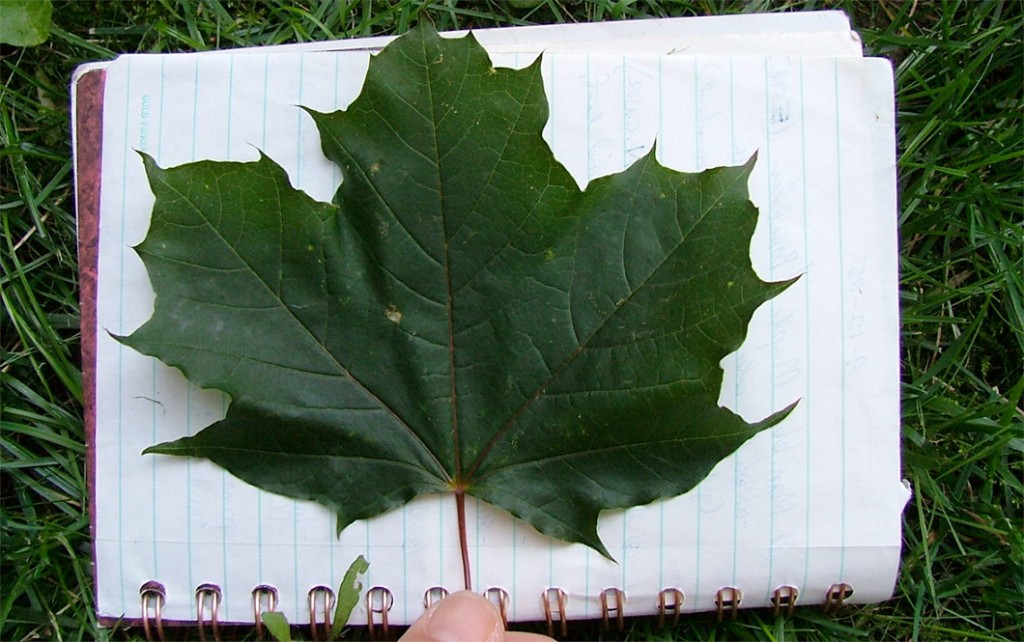
Introduced to Philadelphia by John Bartram in 1756, after bringing seedlings from London, the Norway maple soon became a popular tree for municipal plantings. An aggressive invasive species that shades out native tree saplings, shrubs, and plants, it can be distinguished from native maples by leaf characteristics, color, and the milky sap it leaks when twigs are torn. Norway maple germinates readily, and it’s winged fruits are spread by the wind. Reaching 60-80’ at maturity, the Fairmount Park Stones course is a perfect example of how quickly they can take over if left unmanaged.
Working with Parks & Rec, we’ve held four workdays so far this year. At the course entrance, what was once a degraded forest edge dominated by devil’s walking stick, Ailanthus, Asian honeysuckle and bittersweet, multiflora rose, and English ivy, is now mostly cleared, thanks to volunteers willing to cut, prune, pull, and learn something new along the way. In the near future, we hope to continue the momentum by planting native species in place of what we removed, and to help insure the success of existing native plant communities by eliminating competition from invasive species.
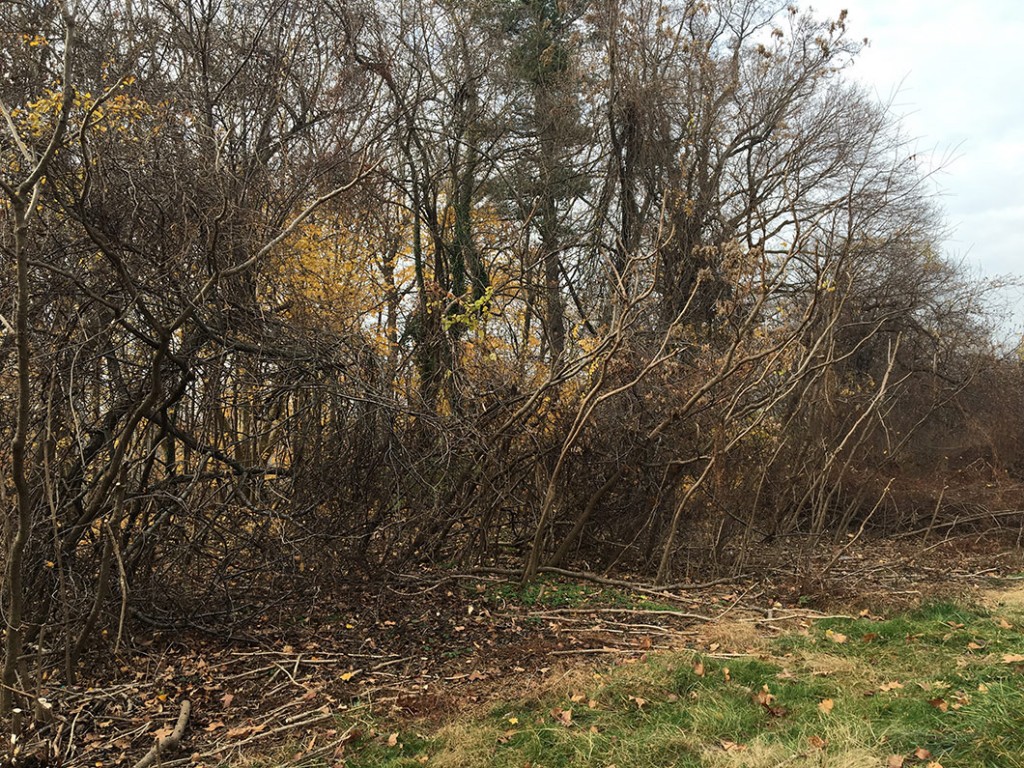
Aside from being an awesome game, Stones is a vehicle for environmental stewardship – a big part of what we hope to do. We accomplished a lot in just four weekends with a handful of people. With any luck, the game’s popularity will grow once people finally get a chance to play on a public course this season. Imagine what we could do with 100 dedicated volunteers putting in volunteer hours each year to fulfill their league membership requirements!
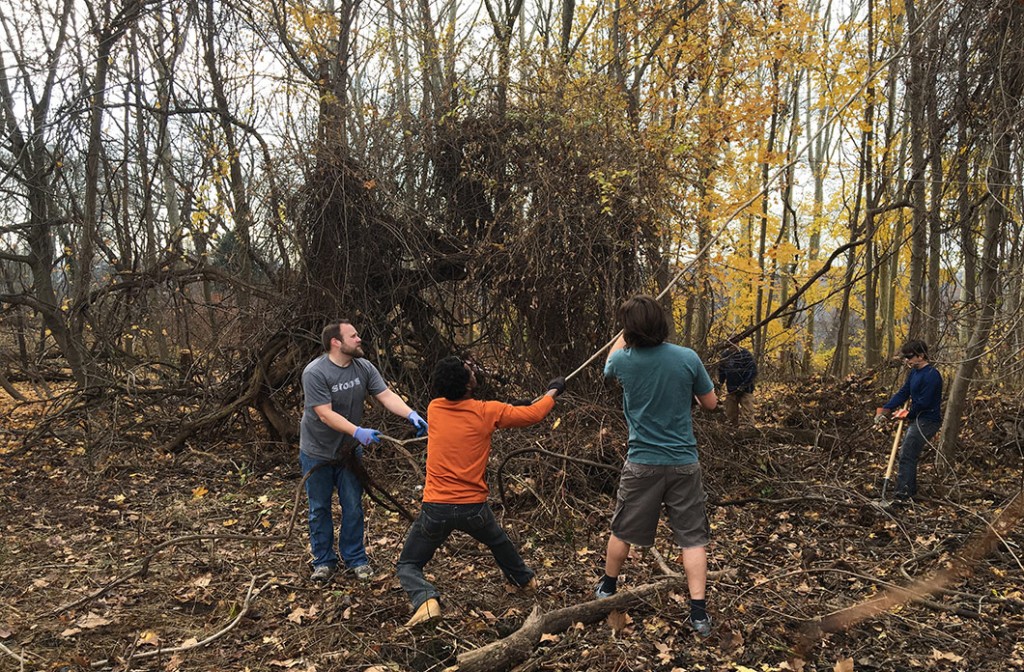
In Philadelphia, the health of our parks is dependent in large part to citizen involvement. If we can get people outside to play a game that brings awareness to the issues surrounding our natural areas, I believe we can have a tremendous impact… and have fun while we do it.

